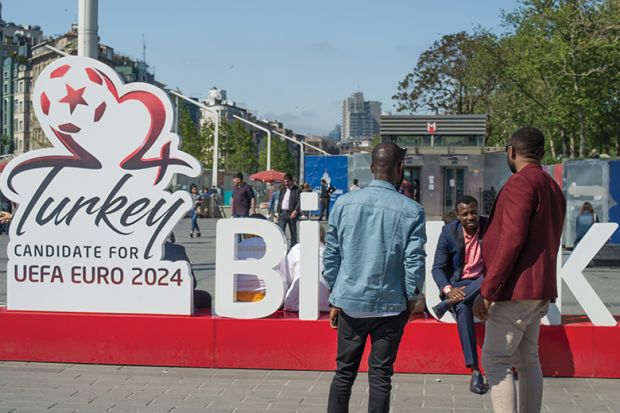There is a certain football manager who, when he fails to sign the range of players he would have liked, growls “It is what it is” and gets on with managing what he’s got. Most editors of academic books will recognise the parallel: you have a subject, too big for a single author, and a list of 10 ideal contributions on 10 topics. But you find only five real fits and the rest are slightly out of position or duplicate each other – and there’s always something missing completely.
Like most of its kind, this book is not to be judged by comparison with a perfect version of itself. It is in some respects a typical academic edited book, and I sympathise, having been there and done that.
A general theme is Al-Nahda, the idea of modernisation or awakening in Arab culture, which puts sport generally in tension with more conservative tendencies, especially when it comes to women’s sport. Broadly, Qatar and Lebanon are slightly over-represented in this volume, while Egypt and Syria are under-represented. But if the whole is unbalanced, the parts contain a great deal of interest for both students of sport and students of the Middle East.
I was fascinated to read, for example, in Cem Tinaz’s account of Turkish sports policy that successive governments have duplicated the fallacy of the UK (and other countries) that if you foster elite sport and attract “mega-events”, this will automatically benefit grass-roots sport. It is an assumption wholly unjustified by the evidence. On the other hand, the more money you spend on Olympic (as opposed to commercial) sport, the more successful you will be. This is exemplified negatively here in so far as Lebanese expenditure is just about the lowest among comparable countries and the country has won four medals in 70 years.
There is also a pattern clearly illustrated here of Gulf states using sport to enhance their images and profiles while incorporating it into projects of modernisation and preparation for a post-oil economy. Indeed, this is the aspect of the subject that most sports fans around the globe will know something about. The best-known case is probably Qatar. Craig LaMay succeeds in demonstrating here that the strategy has backfired: before it was allocated the 2022 World Cup, Qatar’s reputation was as one of the most “advanced” of such states, but the subsequent publicity has exposed many unsavoury elements, not least the exploitative kafala labour system used to build facilities.
There are also two very interesting essays here about highly politicised football support, by Tamir Sorek on Israel and Dag Tuastad on Jordan. Both illustrate the curious near-universal phenomenon of the football stadium as a “permission zone”, where the lords of misrule can operate as nowhere else. Thus, the traditionally leftist fans of Hapoel Tel Aviv call the ultra-Zionists of Maccabi “Nazis”, while the Hashemite loyalists of Faisali call down the wrath of Israel on the Palestinians who support Wihdat. What is it about football?
Lincoln Allison is emeritus reader in politics at the University of Warwick.
Sport, Politics and Society in the Middle East
Edited by Danyel Reiche and Tamir Sorek
Hurst, 296pp, £25.00
ISBN 9781787381520
Published 22 August 2019
POSTSCRIPT:
Body copy: You can’t win every match
Register to continue
Why register?
- Registration is free and only takes a moment
- Once registered, you can read 3 articles a month
- Sign up for our newsletter
Subscribe
Or subscribe for unlimited access to:
- Unlimited access to news, views, insights & reviews
- Digital editions
- Digital access to THE’s university and college rankings analysis
Already registered or a current subscriber? Login







